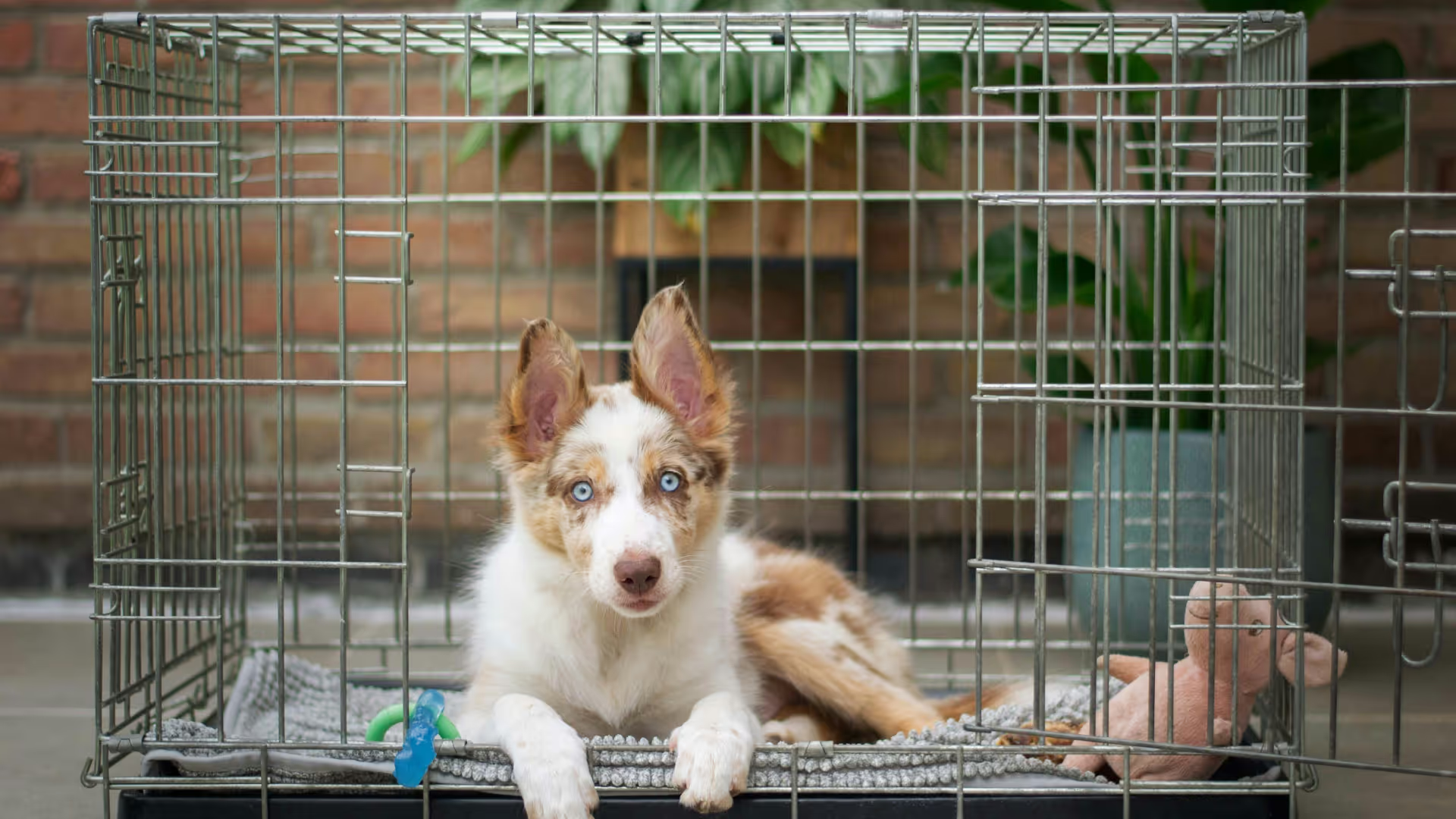Crate training can seem intimidating at first, but when done with patience and positive reinforcement, it becomes one of the most valuable tools you’ll have. Your puppy gains a secure retreat, and you gain peace of mind knowing they’re safe when unsupervised.
1. Why Crate Training Isn’t Cruel
Many people worry confining a puppy feels like punishment. In reality, a properly introduced crate becomes a little doggy den—a place of comfort and security. It helps your puppy cope with stress and keeps them out of trouble when you can’t watch every move.
2. Picking the Perfect Crate Size
Choose a crate slightly larger than your puppy so they can stand, turn, and lie down comfortably. Too much extra room lets them potty at one end and sleep at the other. If your pup will grow, plan to size up as they get bigger.
3. Setting Up a Cozy Crate Corner
Position the crate in a quiet spot indoors—perhaps a spare room or a living‑room corner. Cover three sides with a sheet to create a cove effect, but monitor early squeakers who might chew blankets. If needed, leave covers off until your pup settles in.
4. Open‑Door Introductions
For the first week, leave the crate door open. Feed meals and place the water bowl at the back so your puppy ventures fully inside. Add toys or treats to encourage exploration without ever shutting the door. Feeding in the crate also helps reinforce consistent routines, like those outlined in our Feeding Your Puppy guide.
5. Positive Reinforcement and Commands
Begin closing the door for short intervals—around 30 minutes—while you step away. Reward calm behavior with treats or affection when you return.
Teach a cue word like “kennel” each time you guide them inside and reinforce stillness before opening the door.
6. Building Routine: Supervised to Solo Time
Use the crate whenever you can’t directly supervise: bathroom breaks, cooking, or errands. Gradually extend the time locked in, always returning before your puppy becomes anxious. Predictable use of the crate helps them adjust and gives you a break during busy moments.
As your puppy grows, their crate routine, nutrition, and medical care should evolve with them. Be sure to schedule regular veterinary check-ups to make sure their growth and development are right on track.
7. Troubleshooting Common Challenges
If your puppy barks or scratches, wait for a pause in activity before letting them out—avoid reinforcing noise with attention. For pups not motivated by food, offer extra play or cuddles as rewards. Always ensure they’re safe and not injuring themselves trying to escape.
8. Everyday Crate Uses
Beyond training, the crate stays useful throughout life: a safe spot during thunderstorms, car travel containment, or a quiet nook for rest. Teaching early sets the stage for lifelong benefits.
9. Final Tips for Success
Be patient—some puppies take longer than others. Keep sessions short, positive, and consistent. Celebrate small victories, and remember treats, toys, or affection can all reinforce good behaviors. With time, your puppy will see the crate as their special sanctuary.
Frequently Asked Questions
Is crate training cruel for puppies?
Not at all. When introduced with patience and positive reinforcement, a crate becomes a secure retreat rather than a punishment. Puppies learn to see it as their own cozy den where they can rest and feel safe.
When should I start crate training my puppy?
Begin as early as possible—ideally the day your puppy comes home. Even if you’re starting later, a consistent routine and positive approach will help your pup adapt in no time.
How long can a puppy safely stay in the crate?
A general guideline is no more than their age in months plus one hour (for example, a 3‑month‑old can handle about 4 hours). Always follow up with a bathroom break and play session.
My puppy cries in the crate—what should I do?
Wait for a brief pause in crying before letting them out so you don’t reward noise. Gradually increase alone time, offer comforting toys, and use gentle reassurance without turning it into a playtime.
What size crate does my growing puppy need?
Choose a crate just big enough for your puppy to stand, turn around, and lie down. As they grow, size up to maintain these dimensions, preventing them from soiling one corner and sleeping in another.
